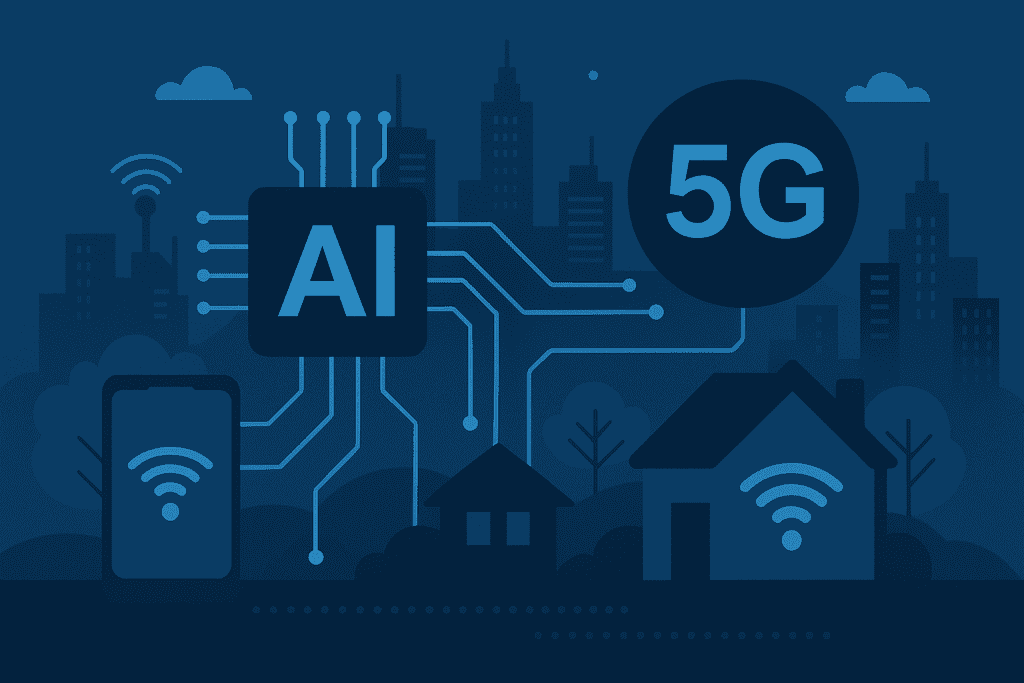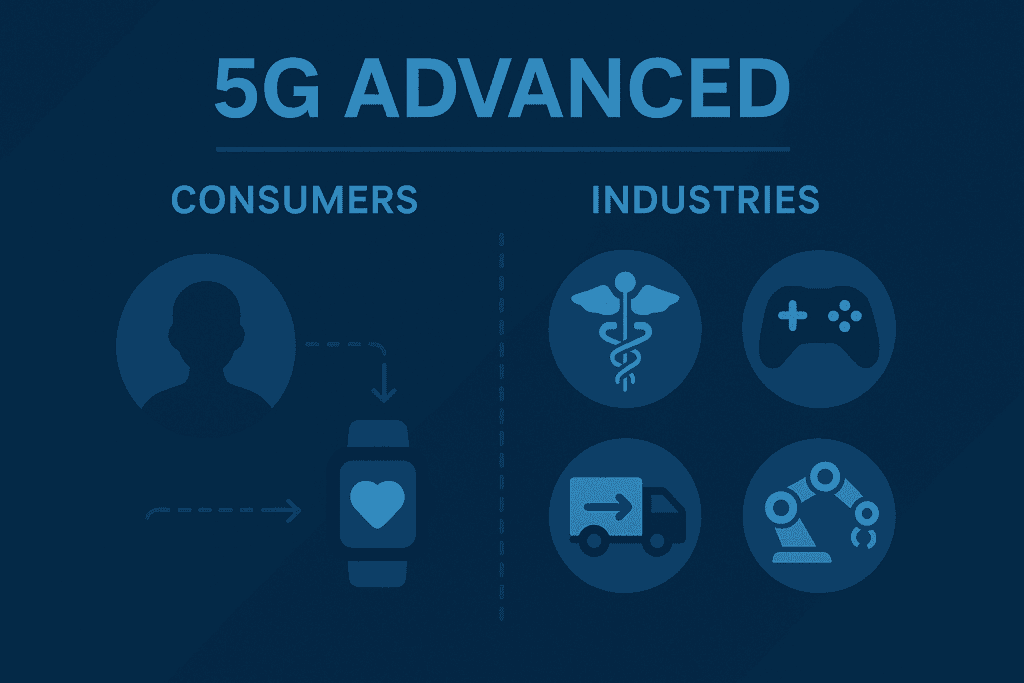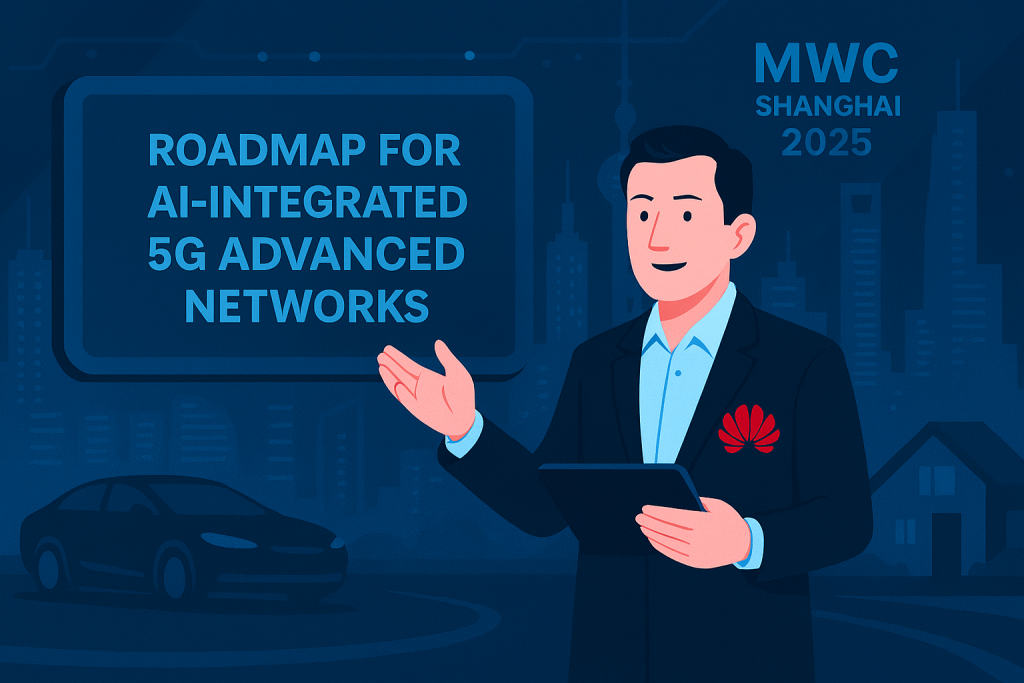
5G Advanced is no longer just a vision—it’s the living, breathing future of mobile technology. At MWC Shanghai 2025, Huawei took center stage to reveal not just upgrades in connectivity, but a new way to experience digital life: through scenario-based AI. Picture AI agents that adjust your network speed for a video call, optimize your smartwatch’s data use, or manage an autonomous vehicle’s environment—all in real time.
In this new era, 5G isn’t just faster. It’s smarter, more responsive, and deeply integrated into everyday experiences. And Huawei’s advancements show that we’re moving from passive consumption of data to interactive, intelligent, and intuitive services. Here’s a deep dive into what this means—and why it matters now.
Key Developments in 5G Advanced
At the heart of Huawei’s showcase was the real-world application of 5G Advanced in diverse scenarios. This wasn’t just a technical update; it was a look at how life could change—at work, home, and everywhere in between.
Scenario-Based Services
Huawei emphasized how AI agents running on 5G Advanced networks can tailor services based on user context. For example:
- A remote meeting adapts network resources to eliminate lag and improve clarity based on voice detection and user behavior.
- In smart cities, connected vehicles, drones, and public transport adjust in real time to traffic, weather, and emergencies.
- In gaming and entertainment, latency-sensitive applications like cloud gaming are prioritized without affecting background data like downloads or updates.
This is a major leap from generic connectivity to context-aware intelligence—where your device, environment, and tasks all shape how your network behaves.
Intelligent Uplink Enhancement
Another standout was the Intelligent Ultra Pooling Uplink. Developed in collaboration with China Telecom, this technology significantly enhances uplink speeds, which are crucial for:
- Video conferencing
- Live content creation (e.g., vlogging)
- Industrial data sharing
- Real-time AI decision-making
This breakthrough supports services that require consistent, fast uploads—a core need in the modern, AI-integrated world.
AI Integration at the Core
Huawei introduced a Mobile AI Foundation Network that ensures AI agents can interact seamlessly with cloud, edge, and device-level systems. This integration allows:
- Dynamic bandwidth allocation based on AI needs
- Security enhancements through predictive anomaly detection
- Smart energy management by adapting network loads
Mobile AI Foundation Network
Huawei is helping set global standards for AI-integrated mobile networks. Their AI foundation supports:
- Edge-cloud interaction
- Network self-optimization
- Predictive maintenance and anomaly detection
- Dynamic power management
This foundation allows networks to self-adjust, reducing energy waste, improving security, and enhancing quality of service without human intervention.
5G Advanced Timeline
- Event: MWC Shanghai 2025
- Date: June 18–20, 2025
- Location: Shanghai, China
Huawei used the world’s largest mobile tech stage to demo their live AI-powered 5G-A network, illustrating real-time uplink speed upgrades and adaptive service switching.
Who’s Behind 5G Advanced
Huawei isn’t doing this alone. The company is building a collaborative ecosystem:
- Huawei: Core tech developer, integrating AI with 5G at the protocol and service layers.
- China Telecom: Launched smart uplink pilot services with Huawei.
- China Unicom: Co-deployed 3D smart 5G-A networks in Beijing, enabling high-res, spatial data in dense urban environments.
- Industry Partners: Dozens of telecom and tech firms co-developed Huawei’s Mobile AI Foundation Network.
These partnerships aren’t just about connectivity—they’re about reimagining mobile infrastructure with AI at the core.
Why 5G Advanced Matters to the World

This isn’t just a spec sheet upgrade. It’s a transformation in how we Consumer Impact
Consumer Impact
5G Advanced improves everyday digital life in powerful, sometimes invisible ways:
- Seamless streaming: Imagine watching a 4K concert while on the move—without a single buffer.
- Cloud gaming: Games run with ultra-low latency, even on mobile devices.
- AI-enhanced wearables: Smartwatches and AR glasses adjust performance and sync in real-time.
- Remote work: Video calls auto-optimize to network conditions, removing jitters and lag.
With AI adapting the network on the fly, consumers get personalized performance without needing to configure anything.
Enterprise Impact
In sectors like manufacturing, logistics, and healthcare, 5G Advanced brings transformational benefits:
- Telemedicine: Remote surgeries become safer with near-zero latency and AI-monitoring of vitals.
- Factories: Machines communicate autonomously, reducing downtime and speeding up production cycles.
- Supply Chains: Real-time GPS and environmental sensors coordinate to minimize waste and optimize delivery times.
These improvements aren’t marginal—they represent massive productivity gains and cost savings.
How 5G Advanced Stands Apart
While 5G brought high speeds and low latency, 5G Advanced brings intelligence. Here’s a quick comparison:
| Feature | 5G | 5G Advanced |
|---|---|---|
| Latency | ~10 ms | <1 ms |
| AI Integration | Limited | Core functionality |
| Scenario-based Services | Not supported | Fully supported |
| User Interactions | Screen-based | Multi-modal (voice, spatial, gesture) |
| Network Management | Static | Adaptive, intelligent |
Huawei’s Strategic Vision

Huawei isn’t just building products—they’re shaping the architecture of intelligent networks.
Their goal? To create a platform that allows developers, businesses, and cities to build AI-enhanced services at scale. Huawei’s leadership in mobile AI foundations means they’re laying the groundwork for 6G and beyond.
As AI becomes embedded in the network layer, we move from reactive systems to proactive, intelligent ecosystems—capable of sensing, responding, and even predicting user and system behavior.
What’s Next for 5G Advanced?
The next steps in Huawei’s roadmap include:
- Global rollouts of scenario-based AI services in 2025–2026.
- New consumer devices: Phones, wearables, and home tech optimized for 5G Advanced AI integration.
- Industrial adoption at scale, especially in logistics, finance, energy, and public infrastructure.
- Road to 6G: With foundational AI already in play, 5G Advanced becomes a stepping stone to the even more integrated, ambient connectivity of 6G.
Conclusion
The advancements showcased at MWC Shanghai 2025 underscore the transformative potential of 5G Advanced. As industries embrace this technology, we can anticipate a future marked by intelligent connectivity, seamless user experiences, and innovative applications. Huawei’s leadership in this domain positions it as a pivotal player in shaping the next era of digital transformation.
Resources
- YouTube. Huawei Showcases 5G-A Development and Value of Scenario-based AI
- Huawei. Huawei Showcases 5G-A Development and Value of Scenario-based AI
- Korea Herald. Huawei, Partners Showcase 5G-A Advances at MWC Shanghai 2025
- PR Newswire. Huawei and Industry Partners Reach Consensus on Mobile AI Foundation Networks Driving 5G-A Experience Monetization
- X. Huawei Highlights 5G-A Innovation at MWC Shanghai
